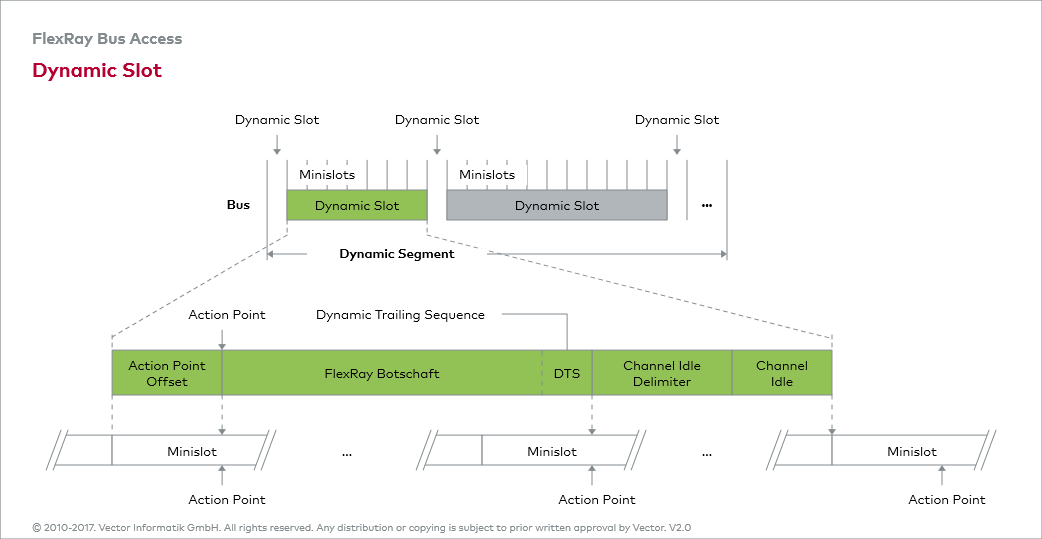Dynamic Slot
Essentially, the same conditions apply to the design of a dynamic slot as were applied to the design of a static slot. A dynamic slot has a layout similar to that of a static slot. Each dynamic slot begins with the so-called action point offset. This offset ends at the action point, the point at which the transmission of a dynamic message begins. This action point corresponds to the action point of the minislots.
Following the action point offset are the action point and the message transmission. In the dynamic segment this is characterized by messages that may have different payload sizes. Message transmission is followed by the channel idle delimiter, which consists of eleven bits — as in the static slot.
It should be noted that per FlexRay specification a dynamic message must end precisely with the next possible action point. To guarantee this, the message transmission is lengthened by the so-called dynamic trailing sequence. Theoretically, this sequence may be a maximum of one minislot in length.

